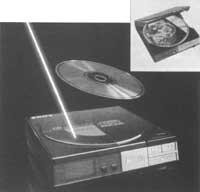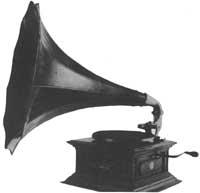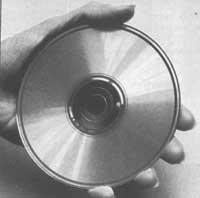Preservation of images and sound records
Elhuyar Fundazioa

Those interested in collecting and preserving image and sound records know perfectly the effects of time. Those responsible for legal deposits, philmotecs and phonotecs should make a special effort to keep the contents of their deposits for a long time.
A series of measures are taken for the prolonged conservation of records. The atmosphere of warehouses and warehouses is controlled taking care of humidity and temperature. Since most image and sound records are made of flammable materials, it is imperative to take fire action. The most sophisticated mechanisms and systems are used to protect these documents.
These special storage systems allow to delay obsolescence but the impact of time is not completely avoided.
Philmotecs and phonotecs are often documents, especially the old ones, which arrive in precarious conditions. Documents that individuals have kept for many years may be somewhat impaired because they have not taken special conservation measures or suffered damage to their use.
In addition, the records collected in these deposits are usually of all ages and times. The old films and records made in another era of technology, in addition to their conservation, pose another problem, that of the good conservation of the old technology teams that can read and review these documents, which in many cases is very problematic. However, they are absolutely necessary. And it must not be forgotten that the main objective of the deposits is to keep the documents that are collected in them for a long time in a position to be seen and heard.

The first films were cellulose nitrate. This material is very flammable and can inflate on your own. Black and white films are stable. Instead, in color films the color degrades. The best way to keep films is to store them in vacuum (watertight boxes) at low temperature, but this solution is very expensive.
As for sound records, their duration is conditioned by the characteristics of the different types of disks. While classic vinyl records, for example, are quite resistant, antique metal discs with acetate surface are extremely fragile.
The quality of the conservation material of the magnetic strips and the thickness of the support are very important. The lighter the band and the thinner the support, the easier they spoil. The compact disc is the type of disk that generates the least problems at the moment. However, the ink used to print titles can cause problems.
The compact disc consists of a pressed polycarbonate plate on top. This compacted part is metallized (aluminum cover), then the lacquer layer on which the titles are printed is placed. The reading is done through this relatively thick layer of transparent polycarbonate. On normal discs, the reading is done by a diamond needle that rubs the disc lines.
In the case of the compact the diamond needle has been replaced by an intangible laser beam. You can read the digital engraving without spoiling it. As for reading, therefore, this type of disc is well protected. But the ink can attack the metallic part of aluminum from behind. When the compact disc was commercialized, the technicians tried to protect the polycarbonate area well with the conviction that the attack of the ink could occur from the top, but did not foresee that the ink could damage the back.

The preservation of image and sound records requires not only the aforementioned measures, but also their conservation. It would be best to copy before damaged records occur. There is currently no systematic copy of deposit records.
Also, copying some records can cause problems. In very obsolete records, for example, to get the duplicate first you have to read it and it can be very difficult and even impossible to read it. Therefore, in some cases it is necessary to metallize the discs in order to read them.
Researchers look for methods that can least damage record support. The solution would be to be able to read the normal discs without touching them, that is, as in the case of the compact read with the laser beam.
However, if the original has errors, the copy will also receive errors. The ideal would be to get a system that looks like the work of copyists.
Despite never seeing the manuscripts Plato wrote, today we can read precisely what he wrote. This has been achieved thanks to the hard work of copyists. Their mission was precisely that: to accurately rewrite the original when a scribe began to deteriorate. Digitization allows achieving the same goal. This process allows obtaining a copy as original as good, as long as the record or document is not very affected.
The digitization of the records allows to follow the same process. If an error occurs in the reading of a disk, for example because part of the album is damaged, the error is corrected and the original information can be found in its entirety. This information is already elsewhere on the album.

It can be thought, therefore, that in the future the national filmoteca, videoteca and phonoteca documents will be systematically digitized. Even so, this process is not followed, on the one hand because the digitization of image sounds is not correctly advanced and on the other hand, for the moment, it is very expensive.
Another thing that can be achieved with digitization is the treatment of the same information, such as removing boring “clok” sounds from the scratched disc or removing external noises. However, this possibility has generated an attitude contrary to purists. In his opinion, the errors proper to the records must be respected and although some of the improvements, such as those mentioned above, are willing to accept, the characteristics of the basic documents should not be modified, that is, it is not possible to add color to the old films or to eliminate the external noise of the old discs (it is known that in the latter case the absence of high tones dissimulate them).





